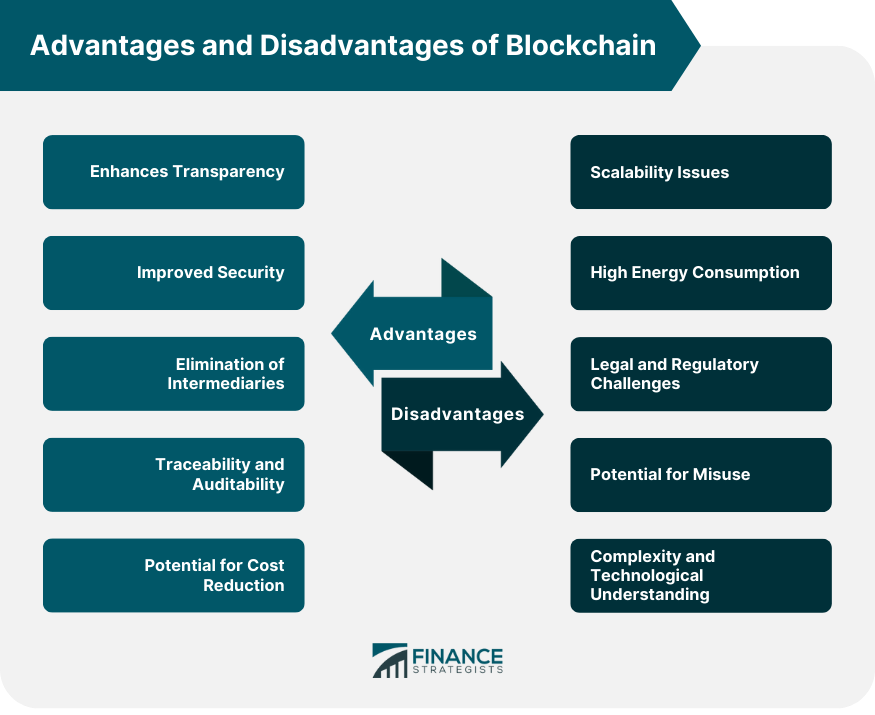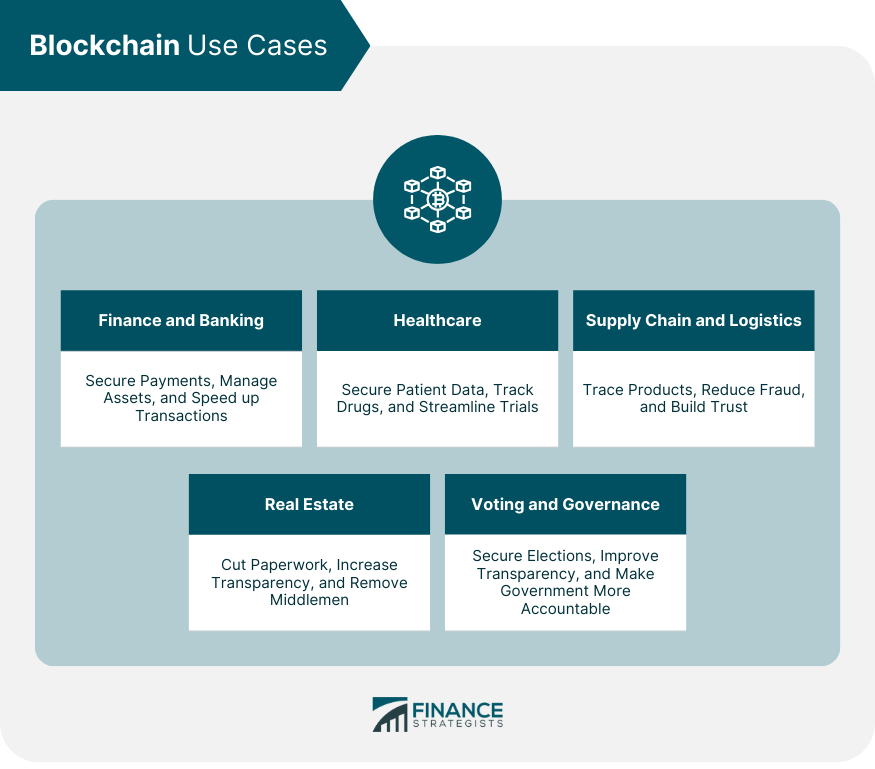Blockchain is a revolutionary technology that acts as a decentralized digital ledger. It securely stores data across multiple computers, known as nodes, making it near impossible to alter or tamper with the information once recorded. Its structure consists of 'blocks' of data chained together, hence the name 'blockchain'. The concept, popularized by Bitcoin, the first cryptocurrency, is now used in various sectors. Its primary advantage lies in the transparency, security, and traceability it offers. Decentralization eliminates the need for intermediaries, fostering a trustless environment. However, blockchain does face challenges, including scalability issues, high energy consumption, and regulatory uncertainties. Despite these, its potential to transform industries, from finance and healthcare to supply chain management, is profound. Future developments in blockchain promise to address existing limitations and open up even broader applications. Blockchain's transparency stems from its public ledger functionality. All participants in the network can track the transactions, fostering trust and collaboration. Due to its decentralized and cryptographic nature, blockchain is more secure than traditional systems. Once a block is added to the chain, it becomes almost impossible to alter or tamper with the data. Blockchain technology enables peer-to-peer transactions, effectively eliminating the need for intermediaries. This direct interaction can lead to lower costs and increased efficiency. Every transaction on a blockchain is recorded and linked to the previous one, which aids traceability. This feature is particularly beneficial in supply chain management, ensuring products' authenticity and preventing fraud. The elimination of intermediaries, combined with enhanced efficiency and automation through smart contracts, could result in significant cost reductions. Due to the nature of its design, blockchain faces scalability challenges. As the number of transactions increases. Mining, a process associated with certain public blockchains like Bitcoin, involves solving complex mathematical puzzles for transaction validation, requiring significant computational power and energy. Blockchain's decentralized nature presents unique legal and regulatory challenges. Without a central authority, issues like dispute resolution can become complex. Additionally, the legal status and regulatory framework for blockchain and related technologies vary greatly worldwide, creating uncertainty. While blockchain provides security and privacy, these features can also be exploited for illegal activities, such as money laundering or illicit trade. The technical complexity of blockchain can make it challenging for the average person to understand and use. This barrier hinders its mainstream adoption. Overcoming these challenges requires a multi-faceted approach that addresses various aspects of the technology. These solutions are crucial to handle the growing volume of transactions on blockchain networks. Innovations like sharding, off-chain processing, and layer-two solutions are being developed to improve throughput and reduce congestion. Alternatives are being explored to tackle the environmental concerns associated with proof-of-work consensus mechanisms. Proof-of-stake and other consensus algorithms are gaining traction, as they consume significantly less energy. Related measures are essential for fostering trust and ensuring legal compliance in blockchain applications. Governments and regulatory bodies are actively working on establishing clear guidelines and frameworks to mitigate risks such as money laundering and fraud. Standardization initiatives are necessary to enable seamless communication and collaboration between different blockchain networks. Initiatives focusing on creating common protocols and interoperability standards are underway to facilitate the integration of disparate blockchain systems. Such technologies are being developed to address the privacy concerns of blockchain users. Techniques such as zero-knowledge proofs and secure multiparty computation enable secure and private transactions while maintaining the transparency and immutability of the blockchain. Education and awareness play a vital role in mitigating risks associated with blockchain. Efforts are being made to educate individuals, businesses, and policymakers about the benefits, limitations, and potential risks of blockchain technology, fostering a better understanding and enabling informed decision-making. By addressing these challenges and implementing mitigation strategies, the blockchain ecosystem can continue to evolve and realize its full potential across various industries. Cryptocurrencies are the most common implementation of blockchain, with Bitcoin and Ethereum being the most well-known. Smart contracts are self-executing contracts with the terms directly written into code. They automatically enforce and execute agreements, eliminating the need for intermediaries. Decentralized finance leverages blockchain technology, particularly smart contracts, to bypass intermediaries in financial transactions, offering more accessibility and financial inclusion. In supply chain management, blockchain can ensure transparency, traceability, and accountability, significantly reducing issues such as fraud and counterfeit goods. In the financial sector, blockchain can streamline payments, remittances, and asset management. It enhances security, reduces costs, and expedites transaction times. In healthcare, blockchain can secure patient data, manage drug supply chains, and streamline clinical trials. Blockchain can ensure transparency and traceability in supply chains, improving efficiency, reducing fraud, and enhancing customer trust. In the real estate sector, blockchain can simplify property transactions by reducing paperwork, enhancing transparency, and eliminating intermediaries. Blockchain can improve the voting process by making it more secure, transparent, and efficient. It can also enhance governance by making government operations more transparent and accountable. The transformative potential of blockchain technology is undeniable. While it offers numerous advantages such as transparency, improved security, elimination of intermediaries, traceability, and potential cost reduction, it also faces several challenges and disadvantages. Scalability issues, high energy consumption, legal and regulatory challenges, potential for misuse, and complexity hinder its widespread adoption. However, efforts are underway to overcome these challenges and mitigate risks. Scalability solutions, energy-efficient alternatives, regulatory frameworks, interoperability and standardization efforts, privacy-enhancing technologies, and education and awareness initiatives are being pursued to address these concerns. By addressing these challenges and implementing mitigation strategies, the blockchain ecosystem can continue to evolve and find applications in finance, healthcare, supply chain management, real estate, and governance. With ongoing developments and advancements, blockchain has the potential to revolutionize industries, enabling secure, transparent, and efficient transactions and operations.Blockchain Overview
Advantages of Blockchain
Enhances Transparency
Improved Security
Elimination of Intermediaries
Traceability and Auditability
Potential for Cost Reduction
Disadvantages of Blockchain
Scalability Issues
High Energy Consumption
Legal and Regulatory Challenges
Potential for Misuse
Complexity and Technological Understanding

Overcoming the Challenges and Mitigating Risks of Blockchain
Scalability Solutions
Energy-Efficient Blockchain Alternatives
Regulatory Frameworks and Compliance Measures
Interoperability and Standardization Efforts
Privacy-Enhancing Technologies
Education and Awareness
Blockchain Implementations
Cryptocurrencies
Smart Contracts
Decentralized Finance (DeFi)
Supply Chain Management
Blockchain Use Cases
Finance and Banking Sector
Healthcare
Supply Chain and Logistics
Real Estate
Voting and Governance

Conclusion
Blockchain Advantages and Disadvantages FAQs
Blockchain works on the principle of decentralization. It stores data across a network of multiple systems, ensuring that information is not held in a single location and does not have a single point of failure. Each transaction made is stored in a block which is then added to the chain of previous transactions, making the data in the blockchain transparent, immutable, and secure.
Some advantages of blockchain technology include enhanced transparency, improved security, elimination of intermediaries, traceability and auditability of transactions, and potential for cost reduction.
While blockchain has many benefits, it also has several challenges, including scalability issues, high energy consumption, legal and regulatory challenges, potential for misuse, and the complexity of understanding and implementing the technology.
Blockchain technology has been used in various sectors. In finance, it's used for efficient, secure transactions and smart contracts. In healthcare, it's used to secure patient data and manage drug supply chains. Supply chain and logistics sectors use it for transparency and traceability, while the real estate sector uses it to simplify transactions. In governance, it's used for secure, transparent voting systems.
Blockchain technology continues to evolve and has great potential for future applications. Trends suggest increased use of smart contracts, growth in decentralized finance (DeFi), and integration with other emerging technologies. However, there are challenges to adoption that need to be overcome, including technical challenges such as scalability, regulatory uncertainty, and the need for a cultural shift in trust.
True Tamplin is a published author, public speaker, CEO of UpDigital, and founder of Finance Strategists.
True is a Certified Educator in Personal Finance (CEPF®), author of The Handy Financial Ratios Guide, a member of the Society for Advancing Business Editing and Writing, contributes to his financial education site, Finance Strategists, and has spoken to various financial communities such as the CFA Institute, as well as university students like his Alma mater, Biola University, where he received a bachelor of science in business and data analytics.
To learn more about True, visit his personal website or view his author profiles on Amazon, Nasdaq and Forbes.















